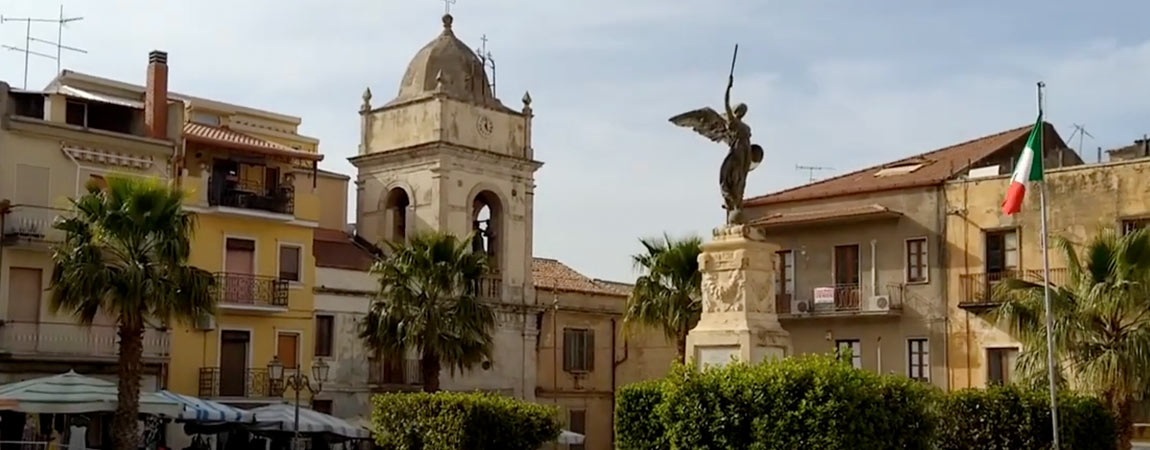
Ramacca is a village rich in history in the province of Catania with a population of about 11.000 inhabitants. Known for the excursions of trekking enthusiasts and for the numerous and important archaeological finds dating back to the Neolithic and the Bronze Age.
The village of Ramacca was founded between 1710 and 1712 by Sancio Gravina. His son, Ottavio, rebuilt the town after violent earthquake of 1693 which completely destroyed eastern Sicily, starting from the coast up to about 50 km inland.
The earthquake was such as to destroy many towns located on the west side of Etna. The tragic natural disaster had as a dramatic consequence the loss of their homes for an infinite multitude of farmers in the tormented areas.
Ottavio Gravina, struck by the disastrous situation of many of his fellow citizens, devoted himself to Ramacca's reconstruction involving in his ambitious projects the poor farmers left homeless who willingly responded to his invitation to collaborate to revive the country.
It is said that, in addition to the locals, crowds of homeless people went to Ramacca from all corners of the island. Hence the characteristics of heterogeneity which, still today, are the prerogative of the population of Ramacca.
At the time of the foundation, the inhabitants of the village were about duecent. In just ten years, they grew to over three hundred.
Ramacca, a fertile and welcoming land for many immigrant labourers
The land of Ramacca is very fertile and, since its foundation, it has attracted farmers from all the other provinces of Sicily who went there to work as agricultural labourers.
The extra hands have always been welcomed with kindness and the agricultural richness of the area meant that most of the immigrant laborers had, in a short time, the possibility of buying plots of land to work on their own.
Coming from different areas, i immigrant farmers they brought their customs and traditions to Ramacca, contaminating and enriching the local culture.
In fact, in the village of Catania, a multitude of dialects, accents and traditions continue to coexist, giving life to a charming Babel and unique that constitutes the most evident and original peculiarity of the country.
Ramacca, the origins of the name
On the etymology and origins of the toponym Ramacca, history scholars have advanced innumerable theories, none of which has been considered definitive. We report some of them, specifying that given the fragility of the hypotheses advanced, the name of Ramacca is still wrapped in a veil of mystery.
According to some, the origin of the toponym is Arab and derives from Ramuellah (refuge for criminals) or from Ramuallah (garden of Allah). always advocating theArab origin, other historians maintain that Ramacca derives from Ranmak (who looks after mares) or from Ramaha (galloping for horses) or from Ramah (small hill).
Ramacca, the most important cultural attractions
The most important cultural attractions of the country are: the archaeological Museum; The Mother Church, built in 1700 on the remains of an ancient sixteenth-century church, which has a single nave interior, a presbytery made with a marble floor, a valuable high altar with a polychrome marble tabernacle and a remarkable square tower which houses a precious clock ; there Church of St. Joseph, with a single nave enriched by majestic stuccos and paintings.
Ramacca, the main events
Ramacca's demonstrations are closely linked to his peasant vocation. The day it is celebrated San Giuseppe, for example, loaves of different shapes are prepared (in the shape of a palm, or a saint's stick or a ring to honor the Holy Family). Also in San Giuseppe, in the square near an altar, prepared for the occasion, the participants are offered the traditional pasta, broad beans and lentils (pasta co'maccu)
In October, the Madonna delle Grazie Fair takes place which includes an important animal market.
The purple Ramacca artichoke
Ramacca is known throughout the world for a particular variety of artichoke that is grown only in this area. It is a vegetable with an unusual violet color to which one is dedicated every spring famous festival.









